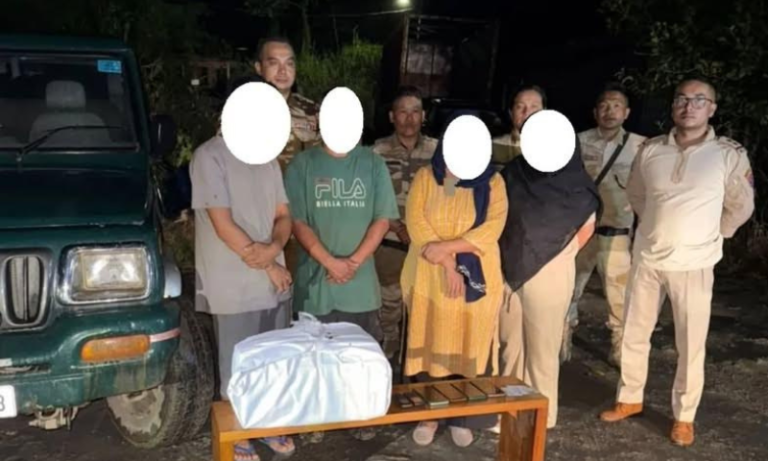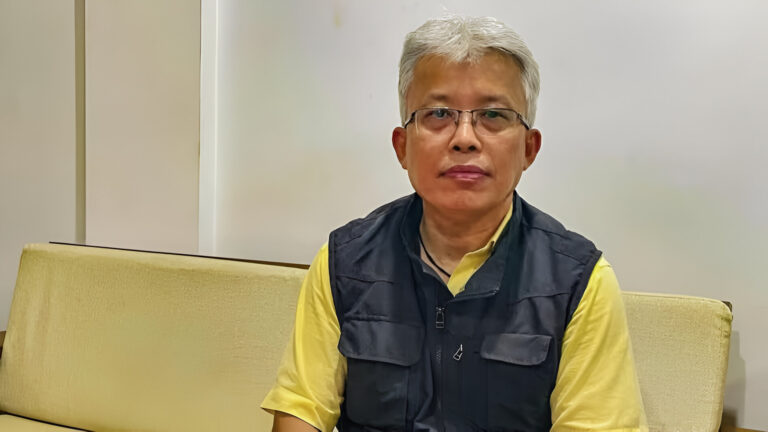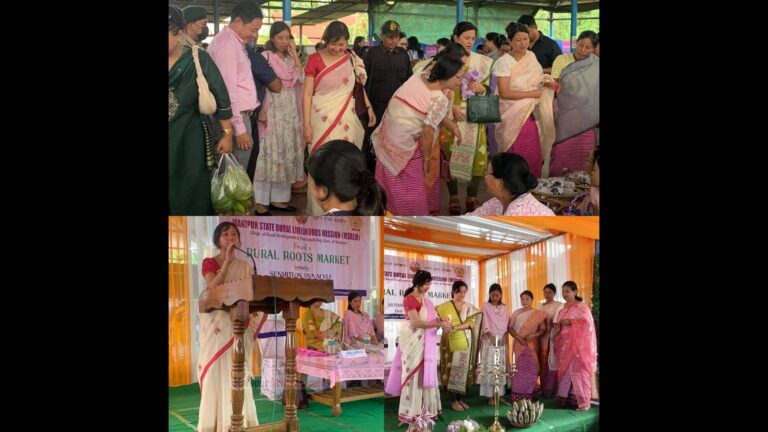Naga Students Conduct Recce in Border Areas
Summary
From October 21-25, 2024, Naga student groups, including the Naga Students’ Federation (NSF) and All Naga Students’ Association Manipur (ANSAM), visited border villages in Tengnoupal district, Manipur. Their mission was to evaluate the implications of the Free Movement Regime (FMR) abrogation and oppose border fencing efforts, which they believe threaten Naga sovereignty. They met local village authorities and discussed the refugee crisis, vowing to protect Naga land.
Full Article
Introduction
Border disputes and sovereignty issues are often complex, deeply rooted in history, and fraught with tension. This is especially true for the Naga community in Northeast India, where territorial integrity and identity are core concerns. Recently, a significant event unfolded, further highlighting these challenges—the Naga Students’ Federation (NSF) conducted a reconnaissance mission in the border areas of Manipur, with a particular focus on the implications of the Free Movement Regime (FMR) abrogation.
Their mission? To assess the situation on the ground, meet with village leaders, and show solidarity with the local population affected by proposed border fencing. The Naga students are not just observers in this matter—they are deeply involved in protecting what they see as their ancestral homeland.
The Reconnaissance Mission: A Journey to Safeguard Naga Homeland
The NSF, along with the All Naga Students’ Association Manipur (ANSAM) and other student unions, embarked on a mission that spanned several days—from October 21 to 25, 2024. Their journey took them to border villages in Tengnoupal district, an area fraught with tensions due to its proximity to the Indo-Myanmar border. This mission was no ordinary visit; it was a strategic reconnaissance aimed at gathering first-hand information about the local situation amidst growing concerns over border fencing.
The primary theme of their mission was “Safeguarding Naga Homeland: Breaking Barriers & Shadow Lines.” This slogan encapsulates the deep concerns felt by the Naga people about the looming threat to their territorial integrity. The shadow lines they referred to are not just physical boundaries but also invisible barriers that divide communities and their rights to the land.
Free Movement Regime (FMR): What’s the Fuss About?
So, what exactly is the Free Movement Regime (FMR), and why does it matter? In simple terms, the FMR allows border residents on both sides of the Indo-Myanmar border to cross freely within 16 kilometers without requiring a visa. This arrangement, in place for decades, has allowed communities to maintain cultural and familial ties across borders, fostering a sense of unity and shared identity.
However, the central government’s move to abolish the FMR and erect fences along the border has sparked widespread opposition among the Naga population. They see this as an attempt to sever the close ties between Naga families divided by the border and weaken their territorial claims. The Naga community’s fight against this move is not just about physical boundaries; it’s a struggle for preserving their cultural and historical identity.
Key Highlights of the Recce
On October 22, 2024, the student delegation visited border pillar No. 82 near Nongkham Satang village, a key location in the ongoing border discussions. They took stock of the situation and met with the local village authorities, who shared their concerns about the refugee crisis and the border fencing issue.
During the visit, Peter, chairman of the Choktong Village Authority, revealed that their village was housing 690 refugees, but only 290 had undergone biometric verification. This raised serious concerns about the growing refugee population, which now outnumbers the local villagers themselves. Such developments have placed enormous pressure on the local communities, both in terms of resources and security.
Peter’s sentiments were echoed by Dangshawa Mopham, chairman of the Satang Village Authority, who lamented that as simple villagers, they had little say in the government’s fencing decisions. However, he expressed strong support for the Naga student bodies and their efforts to protect the Naga homeland.
Standing Firm: Naga Students Vow to Protect Their Land
Addressing the gathering, NSF president Medovi Rhi made it clear that the land belonged to the Nagas and that they would not allow anyone to compromise their claims. His statement reflected the fierce determination of the Naga community to defend their territorial integrity at all costs.
“We cannot compromise,” Rhi said, “This land is ours, and nothing will take it away from us. We are standing here united, and we will protect our people, no matter the cost.”
His message resonated with the gathered villagers, who have long felt marginalized in the larger political discussions around border demarcation and fencing.
Opposition to Border Fencing
The central issue that emerged during this visit was the ongoing border fencing efforts. The Naga student leaders strongly opposed these moves, stating that they would further divide the Naga people, who have lived on both sides of the Indo-Myanmar border for centuries. Ruwnglar Elly Anal, president of the Naga Students’ Union Chandel (NSUC), was vocal in his criticism of the government’s actions.
He warned that removing the Free Movement Regime and enforcing border fencing would not only harm the Naga people’s way of life but would also exacerbate tensions between the two nations. According to Elly Anal, the Naga people will never accept this border fencing, which he believes threatens their long-standing fight for sovereignty and self-determination.
The Refugee Crisis: A Growing Concern
While the focus of the visit was primarily on the FMR and border fencing, the refugee crisis also featured prominently in the discussions. With hundreds of refugees now residing in border villages like Nongkham Satang and Choktong, the pressure on local resources is immense. The fact that biometric verification has only been completed for less than half of these refugees raises serious concerns about the future of these border communities.
The Naga students’ visit highlighted the importance of addressing these issues holistically. It’s not just about the land—it’s about the people who live there and the challenges they face every day.
Looking Ahead: What’s Next for the Naga Students’ Movement?
Following their visit to Tengnoupal district, the NSF and ANSAM teams are set to continue their reconnaissance mission in Ukhrul, another critical border region. The student leaders have vowed to keep up their fight against the abrogation of the Free Movement Regime and to push back against the border fencing efforts.
This is not the first time the Naga students have taken a stand on these issues, and it certainly won’t be the last. The ongoing border disputes are deeply intertwined with the Naga people’s struggle for self-determination, and the student leaders have shown that they are ready to continue this fight for as long as it takes.
Conclusion: A Struggle for Identity and Sovereignty
The Naga students’ reconnaissance mission in Manipur’s border areas is more than just a fact-finding trip. It’s a powerful statement of resistance against attempts to redraw borders and compromise the Naga people’s identity. By visiting these border villages, the students are showing that they stand in solidarity with their fellow Nagas and are willing to fight for their rights.
As the debate over the Free Movement Regime and border fencing continues, the Naga students’ mission serves as a reminder that this issue is far from resolved. For the Naga people, it’s about much more than borders—it’s about preserving their homeland, their culture, and their sovereignty.
FAQs
- What is the Free Movement Regime (FMR)?
The FMR allows residents near the Indo-Myanmar border to move freely within 16 kilometers without requiring a visa. - Why are the Naga students opposing the border fencing?
They believe it will divide the Naga people, who share cultural and familial ties across the border. - What concerns were raised by local villagers during the recce?
Villagers expressed concerns over the growing refugee population and the lack of biometric verification for many refugees. - Who led the reconnaissance mission?
The mission was led by the Naga Students’ Federation (NSF) and supported by other Naga student bodies like ANSAM. - What’s the next step for the Naga student groups?
They will continue their reconnaissance in Ukhrul and push back against the abrogation of the FMR and border fencing.




